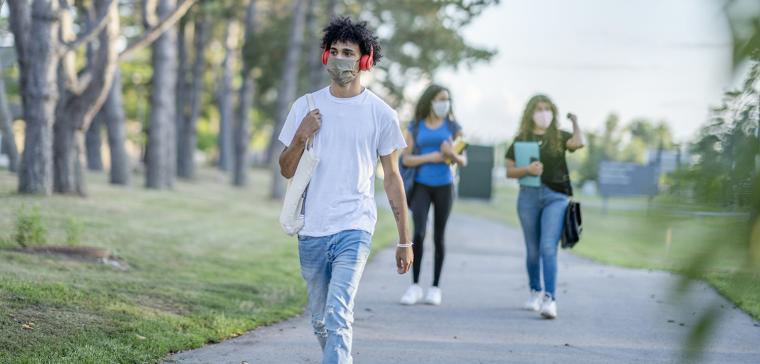- Managing your Practice
-
- Your Benefits
-

Introducing the ultimate Club MD experience
From work to play, and everything in between, we provide you with access to hundreds of deals from recognizable, best-in-class brands, elevating every facet of your life – from practice supports to entertainment, restaurants, electronics, travel, health and wellness, and more. Your Club MD membership ensures that these deals are exclusive to you, eliminating the need to search or negotiate.
Welcome to the ultimate Club MD experience. Your membership, your choices, your journey.
-
- Advocacy & Policy
-
- Collaboration
- News & Events
-

Stay Informed
Stay up to date with important information that impacts the profession and your practice. Doctors of BC provides a range of newsletters that target areas of interest to you.
Subscribe to the President's Letter
Subscribe to Newsletters
-
- About Us
-

I’d Love to Change the World (but I don’t know what to do) - Ten Years After
September 1, 2020
President's Blog
At this stage of the Covid pandemic, I think we’d all like to change the trajectory of where we are heading as a community, as a nation, and how we are to live our lives over the next few years…if only we knew how. Hard to do in the absence of any certainties. I also think we can agree that Canada has entered an “endemic stage”, therefore we must shift towards a “how do we live with SARS-CoV2?” way of thinking.

This was on my mind when I recently attended several meetings with the presidents of our Provincial and Territorial Medical Associations across Canada. These are humble, dedicated, inspiring representatives of our medical profession, each with a variety of professional experiences. In a world full of uncertainty, we shared successes, similarities, and differences in each of our jurisdictions’ pandemic management, and a common theme emerged. Physicians and healthcare administrators came together in unprecedented ways to ensure our pandemic plans addressed everybody’s needs, including physicians in community offices. While delivery models are different across Canada, one model dominates. Our publicly-funded healthcare system is largely privately delivered by physicians who are fiscally responsible for the infrastructure costs. While there are absolutely critical ongoing issues to be addressed, particularly in jurisdictions where relationships with government are not collaborative, we have made great strides in a short period of time.
Prior to our current pandemic, many Canadians were already struggling to access care with a family physician or specialist, particularly in Indigenous, remote, or under-serviced communities. The pandemic exposed our weakest links: over-crowding, long surgical wait lists, poor broadband access, arduous travel requirements to access care, insufficient mental health and addiction services--particularly for youth, and timely access to primary care for acute illnesses. And all of a sudden, sitting in an over-crowded emergency room or waiting 2 weeks for a primary care appointment to assess viral illnesses, was not acceptable. It could be COVID-19, it could spread if we missed it. This challenge was, of course, made worse by the narrow scope of eligibility for testing due to limited capacity. I diagnosed several cases of COVID-19 over the computer when my patients told me of their high fever, cough, and loss of taste or smell. We will need to await serology testing to learn if my diagnosis was correct, as none of these patients had an actual Covid-19 test.
 Across the country, several positive changes have been implemented with surprising nimbleness and speed. Although the incorporation of telehealth into longitudinal and specialist care was in its nascent phase pre-pandemic, the explosion of virtual care into mainstream care has been remarkable. But with it has come the boom of the corporatization of virtual primary care, and we will need to come together as a profession to decide how we integrate this type of service, as I believe virtual care is here to stay. Is there some way to ensure that the fragmented medical advice delivered remotely or via a bot is somehow connected to the patients’ medical home, or local community services for in person assessment, so it does not lead to missed or delayed diagnosis, as it has done, even for patients in my practice? On the other hand, patients without a regular family doctor are able to access advice from virtual systems or the enhanced 811 service, who may have otherwise been left out in the cold. But patients are also able to access their own doctor or be referred to a specialist either virtually or by phone, particularly in remote and rural areas, when previously they may have had to travel great distances to be assessed. Access to improved broadband has not evolved as quickly, but I do respect that there are many layers to consider in this regard, including geographical challenges such as mountains, muskeg, and ice.
Across the country, several positive changes have been implemented with surprising nimbleness and speed. Although the incorporation of telehealth into longitudinal and specialist care was in its nascent phase pre-pandemic, the explosion of virtual care into mainstream care has been remarkable. But with it has come the boom of the corporatization of virtual primary care, and we will need to come together as a profession to decide how we integrate this type of service, as I believe virtual care is here to stay. Is there some way to ensure that the fragmented medical advice delivered remotely or via a bot is somehow connected to the patients’ medical home, or local community services for in person assessment, so it does not lead to missed or delayed diagnosis, as it has done, even for patients in my practice? On the other hand, patients without a regular family doctor are able to access advice from virtual systems or the enhanced 811 service, who may have otherwise been left out in the cold. But patients are also able to access their own doctor or be referred to a specialist either virtually or by phone, particularly in remote and rural areas, when previously they may have had to travel great distances to be assessed. Access to improved broadband has not evolved as quickly, but I do respect that there are many layers to consider in this regard, including geographical challenges such as mountains, muskeg, and ice.
We know that government collaboration directly impacts patient care. The need for physicians’ voices in re-imagining healthcare delivery has never been greater. There are things we know need transforming if we want to change our world. Collaboration with all our partners to address the outstanding areas including: quality virtual care services, public health capacity, domestic supplies of PPE and vaccines, equitable access to care -- including Indigenous, rural, and remote populations, seniors and long-term care, and the treatment of mental health and addictions. Now is the time for “blue sky” thinking. How can we continue to provide quality care to our patients, and ensure that physicians remain resourced, supported and compensated in our uncertain future? This shared responsibility and accountability can only occur if we continue to work together.
Having had the opportunity to discuss this disruptive future with my Canadian counterparts, I feel heartened with the work underway. And although there is still so much up in the air, I know that strong capable physicians are leading us to our new future state – and that’s a good thing.
- Dr Kathleen Ross




